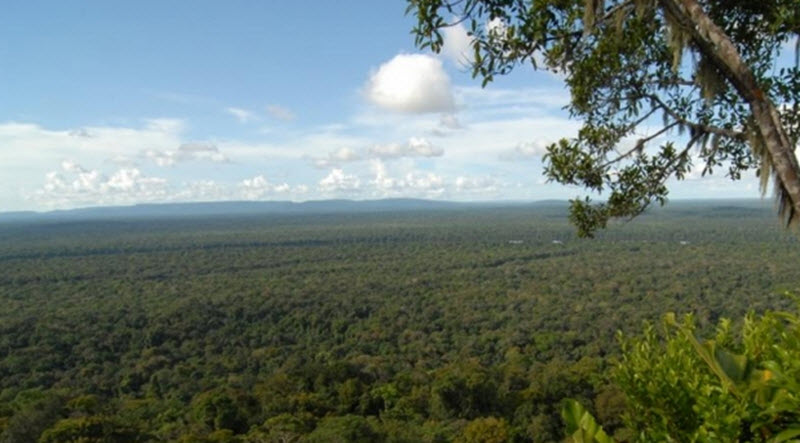There are four main tropical rainforests in the world. The Congo, the New Guinea rainforest, the Amazon and the Iwokrama. Respectively, the first three have gained more notoriety over the years. Most people have little to no exposure to the Iwokrama Forest Reserve. This is certainly not because it lacks the abundant flora and fauna of the other three.
The original purpose of the reserve was to protect the rainforest and it remains so to this day. There is much to protect, like its bird, fish and animal population. The beautiful canopied trees and lush watershed from the river provides an optimum environment for both the inhabitants and tourists that arrive each year to admire them.

Location
At just over 1,400 square miles, the Iwokrama Forest is located in the middle of Guiana Shield in Guyana. Iwokrama lies between 4 degrees and 5 degrees latitude and 58.5 and 59.5 longitude. It spans one million hectares and is considered virgin forest.
To the west of the forest is the Pakaraima Mountains and on the east is the highlands. The savannahs are to its south and the Siparuni River to its north. Directly through the middle of the forest runs the Burro-Burro River.
History
Iwokrama Forest Reserve is referred to as the green heart of Guyana. The Macushi indigenous people find their protection there and have for thousands of years. This area of land was established as a protected area in 1996 under a federal mandate.
The Iwokrama Forest Reserve serves as a hot tourist destination for activities like birding, guided walks and boat trips. The boat trips offer a rare chance to see the tree boa and paca. You will also see large numbers of wild orchids growing on the trees along the river. There are also guided hikes up the mountains to see a more spectacular view of the canopy. Each activity is done with experienced reserve specialists able to teach about the fauna and flora being observed.
Ecology
Much of the ecology of the Iwokrama is a product of the mixture of Guinean and Amazonian ecology. Biologists credit this fact for the forests high species richness. A lot of its wildlife has become extinct or threatened and placed on the endangered species list.
The number of species of bats for any area of this size in the world is unrivaled. It is also rich in fish species and supports a wide bird diversity. There are a reported 500 species of birds, with five different macaws alone.
The forest is home to the red howler monkey, the spider monkey, the wedge-capped capuchin, the bearded saki, the brown capuchin and the white-faced saki monkeys. It is home to the giant anteater, the giant river otter and the giant armadillo. The forest is canopied by a low tropical forest measuring up to 100 feet high and is home to the Iwokrama Mountains.
The Iwokrama Forest Reserve is a spectacular place with such diverse animals to see like the hula tree frog and the Guinanan cock-of-the-rock. It is a protected piece of land, enabling humanity to continue to enjoy its beauty and rare species.
